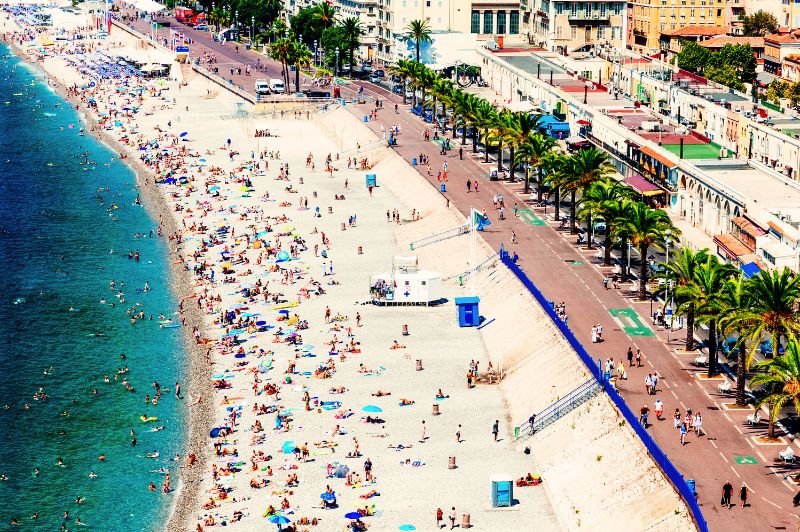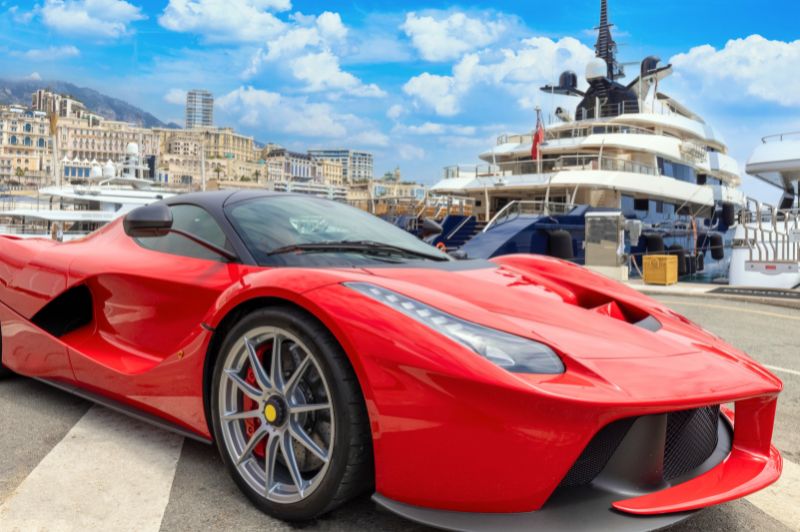Why the French Riviera Isn’t Always a Dream in Summer
The French Riviera has long been painted as the ultimate luxury escape – sun-soaked beaches, glamorous yachts, and charming old towns. But for many summer travelers, the reality doesn’t match the fantasy. Beneath the postcard-perfect scenery, the Riviera has a darker side that few travel guides mention.
1. Overcrowding Nightmare

From May to September, the Riviera becomes a playground for the ultra-rich and an invasion zone for mass tourism. Cities like Nice, Cannes, and Saint-Tropez are flooded with visitors, making it nearly impossible to enjoy the region’s beauty without fighting endless crowds.
Even smaller villages like Èze and Saint-Paul-de-Vence are packed, turning once-peaceful streets into slow-moving tourist highways. And forget about finding a quiet spot on the beach – many public ones are overcrowded, while the best locations are privatized, requiring an expensive sunbed rental.
2. If You’re Not Rich, You’re Not Welcome

There’s a reason the Riviera is synonymous with wealth. In places like Monaco and Saint-Tropez, you’ll see luxury cars, private clubs, and exclusive beaches where regular tourists are barely tolerated.
Some restaurants and bars have unspoken dress codes, and if you don’t fit the “look,” don’t be surprised if you get snubbed. Many travelers report feeling unwelcome in high-end areas, where the service often caters more to celebrities and high rollers than average visitors.
If you’re not staying in a five-star hotel or mooring your yacht in the harbor, you may feel like an outsider.
3. Wallet-Draining Experience

The high prices in the Riviera aren’t just a side effect of popularity, they’re intentional. The region thrives on its luxury image, with businesses setting prices to maintain exclusivity. Even for those stretching their budget, the illusion of high-end travel is part of the experience.
Restaurants charge absurd prices for the simplest (often mediocre) meals, and drinks can cost as much as a full dinner elsewhere in France. Hotels slip in extra charges with resort fees and tourist taxes, turning an already pricey stay into a budget-wrecker.
Even getting around is a financial trap. Taxis and Ubers charge inflated rates, and a quick ride can cost more than a full day of public transport in another region. Want to take a scenic train or boat tour? That’ll set you back even more.
Then there’s the beach situation. Many of the best spots are private, with entry fees that feel like a cover charge for sand and water. Public beaches are packed to the point where you’re practically sitting on someone else’s towel.
Nothing is free, and if you don’t plan carefully, the Riviera will drain your wallet faster than you can say “Côte d’Azur.”
4. The Glitz-and-Glamour Illusion
The Riviera sells itself as effortlessly glamorous, but much of it feels staged. Many “charming” towns have become sanitized tourist traps, with boutiques selling overpriced souvenirs and restaurants catering to visitors rather than locals.
Even historic sites feel commercialized, often charging high entry fees with little justification beyond their location.
One example is the Russian Orthodox Cathedral in Nice. At the entrance, nuns eagerly offer tickets – €10 per person for a “guided tour”. What they don’t mention is that you can stand at the entrance and see everything for free, photos included.
The paid ticket grants you access to the “wonderful crypt,” which turns out to be a handful of artifacts and a TV screen playing a documentary on repeat.
Many visitors leave feeling scammed, realizing too late that the main attraction is visible without spending a cent.
Is It Still Worth Visiting?

The Riviera still has its moments of magic, but only if you know where to look. Avoid peak season, skip the overhyped spots, and be ready to dodge the tourist traps.
There are still quiet corners, stunning coastal views, and genuine local experiences – but they’re buried under layers of commercialization.
For those with real money, the Riviera probably delivers on its promise: private villas, exclusive beach clubs, Michelin-starred dining.
But for everyone else, it’s often a “luxury” experience designed for mass consumption – overpriced, overcrowded, and not nearly as glamorous as the brochures suggest.
You can spend a fortune trying to keep up with the illusion, but at the end of the day, you’re still fighting for a sunbed and overpaying for an average meal.
